|
Deep in the heart of Fayette County in southern West Virginia lies an eerie reminder of a bygone era – Thurmond, West Virginia. Today, a ghost town with a population of 5 (in 2020), it was one of the greatest and most infamous railroad towns along the Chesapeake & Ohio Railroad at the turn of the century.
Thurmond stands frozen in time, nestled on the banks of the majestic New River. Its dilapidated buildings and crumbling infrastructure offer visitors a haunting glimpse into its prosperous past from when steam trains traveled the rails and coal was king. At its zenith, Thurmond boasted a bustling population and was home to many businesses that catered to locals and passing travelers. Today, however, only memories wander through the abandoned streets as a reminder of the transient nature of prosperity. Amidst the natural wonders of New River Gorge National Park and Preserve, Thurmond's ghostly presence serves as a poignant testament to the unstoppable march of progress and time's ability to reclaim even the most vibrant communities. Thurmond's Namesake
William Dabney Thurmond, originally from Amherst County, Virginia, settled on Arbuckle Creek around 1844. He rose to the rank of Confederate Captain, leading a gang of partisan rangers known as Thurmond's Rangers during the Civil War. Considered nothing more than bushwhackers, his band assisted the Confederacy as scouts, spies, and raiders. In late 1863, Thurmond's Rangers became part of the regular army within the larger unit of the 44th Virginia Cavalry Battalion.
Union troops set fire to Thurmond's home in 1863, and he moved his family from Fayette County. Eventually, returning in the early 1870s, he settled in Minden. As a surveyor, most likely for the C&O Railroad, Thurmond was tasked with surveying the land in the heart of New River Gorge. In lieu of a $20 payment for those services, Thurmond chose to receive 73 acres of land along the newly completed railroad on the north side of the New River in April of 1873. Settling on his new property in the first ten years following the railroad's completion, Thurmond did not do much with his land other than to build a house. He and his son made money transporting loads of produce and tobacco across the New River for twenty cents a trip. In 1883, the C&O Railroad built a freight station next to Thurmond's property, and it became a stop on the C&O's mainline. People began moving into the area to work for the railroad, a post office was established by 1888, and the budding town was named Arbuckle. 
In 1929, D.D. Fitzgerald & Company built the Commissary to provide supplies to the hundreds of railroad workers in Thurmond. They maintained ownership of the building while leasing the land from the railroad through an agreement with the C&O Railroad. Following the devastating fire that destroyed the Lafayette Hotel and its accompanying post office in 1963, the Commissary became the town's new post office. After the post office closed in 1995, it housed Thurmond Supply, the last business to operate in Thurmond.
Thomas Gaylord McKell
During this same time, the other player in the growth of the area, Thomas G. McKell, saw an opportunity to grow his mines by opening up the coal-rich lands along Loup Creek. (The creek has since been renamed Dunloup Creek. It runs parallel to the road for much of the drive to Thurmond.)
McKell owned 12,500 acres of Fayette County property that his father-in-law, Alfred Dun, had gifted him and his wife, Jean, as a wedding present. McKell needed a branch line established connecting his mines to Thurmond's mainline to complete his plans. He wrote the President of C&O Railroad, seeking assistance. After much negotiation, the C&O Railroad built a bridge crossing the New River in 1889 and then began construction on the branch line, funded by McKell, from Thurmond to Glen Jean in 1892. 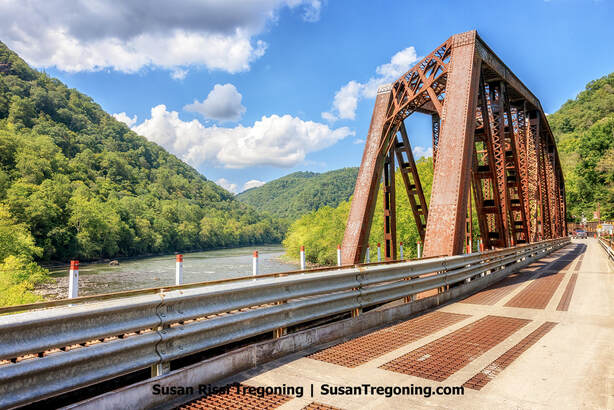 The bridge's distinctive architecture incorporates both a railroad truss bridge that stretches across the primary channel of the New River and an 840-foot-long deck bridge. Originally, the deck bridge served as a pathway linking the train station to the Dun Glen Hotel. It was only in 1921 that Thurmond finally saw its first roads, necessitating significant reinforcement of the bridge to support automobile traffic. The bridge's distinctive architecture incorporates both a railroad truss bridge that stretches across the primary channel of the New River and an 840-foot-long deck bridge. Originally, the deck bridge served as a pathway linking the train station to the Dun Glen Hotel. It was only in 1921 that Thurmond finally saw its first roads, necessitating significant reinforcement of the bridge to support automobile traffic.
The C&O Railroad constructed its first passenger depot at the rail junction in 1891. The land next to it became an essential asset yard where they placed a 70-foot turntable. That turntable quickly became obsolete and was replaced with a 100-foot one.
W.D. Thurmond constructed around 30 houses of various sizes on the mountainside that were available for rent to accommodate the families arriving to work for the railroad.
The Hotel Thurmond was built on Commercial Row, Thurmond's downtown business district, that same year. Sitting on property adjacent to the railroad tracks, it was next to where the Thurmond Bank now stands. This modestly built establishment consisted of 25 guest rooms, marking the inception of town lodging services. Captain Thurmond, a strict Baptist, outlawed gambling or alcohol in his hotel, something the men in town did not receive well.
The first shipment of coal from Glen Jean's Collins Colliery Company occurred on November 7, 1893, and the Dunloup Creek Branch rapidly became the busiest railroad branch in the New River region, servicing 26 coal mines on the rich Sewell coal seam. Thurmond Booms
With the opening of the Dunloup Branch Line, Thurmond became a Junction, and the town boomed!
As the demand for smokeless coal and coke grew, more people arrived in Thurmond, seeking work in the mines. Dozens of mines, such as Collins, Dunloup Creek, Minden, Arbuckle Creek, Nuttalburg, Kaymoor, and Coal Run, all shipped their coal through Thurmond, and the town began to sprawl out as the gorge witnessed a rapid emergence of coal mining companies, towns, and camps. Thurmond was so remote that there were no streets or cars there until 1921. The town was only accessible by train, and the railroad tracks were the bustling main street of Thurmond's Commercial Row. Everything in town was transported by rail, including fruit, furniture, clothing, and mining equipment. Tragedy struck in 1899 when a fire swept through Thurmond, burning down the depot and several other downtown businesses, including the Hotel Thurmond, leaving nothing but ruins. That fire did not slow the town's growth. It was during the rebuilding that it saw its biggest boom. The Lafayette Hotel, a three-story, 35-room establishment, pronounced "lay-flat" by the locals, was constructed in 1901 on the site where the Hotel Thurmond once stood. With its seven bathrooms, steam heat, and 400 electric lights, the hotel offered modern amenities to its guests. It also featured a veranda stretching to the railroad tracks and hosted various businesses and shops like the post office and William Thurmond's National Bank of Thurmond. However, there was one notable absence from its offerings: no saloon. After 30 years, the town was finally incorporated in 1903 and officially named Thurmond. Captain Thurmond remained committed to upholding his town's laws following his devout Baptist convictions, and the vices of alcohol and gambling continued to be outlawed. Southside and the Dun Glen Hotel
While Captain Thurmond upheld his strict moral code in town, just across the river, Thomas McKell took advantage of the opportunity to establish a community without any of Thurmond's fun-killing limitations.
McKell built the Dun Glen Hotel—a remarkable structure considered a resort complex by today's standards. This four-and-a-half-story building had an array of facilities within it. In the basement, there was a grocery store and a secure bank vault. The main floor had numerous dining rooms and ballrooms where guests could indulge in fine cuisine and dance the night away. An immense gambling hall was where fortunes were won or lost in moments. Open around the clock was an ever-bustling bar with an ice plant to keep drinks chilled. Visitors could also find every convenience on this level, amenities such as a barber shop, laundry service, and even postal services. The train station was accessible from the second-story level via a viaduct linking the hotel to the station, allowing guests to cross the river. One hundred guest rooms priced at $2.50 a night were across the top three floors. Interestingly, though, while the basement boasted sturdy brick walls ensuring security within its confines, the rest of this magnificent structure was wood. On the night of Dun Glen's grand opening, people gathered for a symphony performance of an orchestra from Cincinnati, Ohio—a testament to the excitement and anticipation surrounding this new addition to the town; the crowd was enormous. In no time, saloons and gambling houses sprang up along the south side of the New River. On the hotel's eastern side lay a cluster of worker dwellings and a series of Black shanties perched atop the hill adjacent to the station. In the southern region near Dun Glen, a vibrant district dubbed Ballyhack or Bahalac flourished, earning fame for its multitude of saloons teeming with gambling activities and prostitution. These budget-friendly watering holes catered whiskey by the quart, enticing miners and train crews to squander their funds on liquor and engage with prostitutes during their leisure time. The Dun Glen Hotel gained infamy for its indulgence in vices such as gambling, drinking, dancing, and prostitution. This notorious establishment gave rise to two famous sayings about Thurmond: one suggesting that there is "no Sunday west of Clifton Forge and no God west of Hinton," while the other implies that "the only difference between Hell and Thurmond is that a river runs through Thurmond." The hotel's bar, known for never closing, particularly angered W.D. Thurmond, who had envisioned a religiously strict community. Much to Captain Thurmond's dismay, the larger community began to equate the name Thurmond with rampant lawlessness and chaos, even though Thurmond prohibited alcohol and vice entirely. His ban only encouraged more people to visit Dun Glen. Thurmond's growth and the growth of the Dun Glen Hotel were inseparably connected. While the thriving economy attracted more workers, investors, and coal owners, the Dun Glen Hotel elevated Thurmond's status as a Must-Visit destination. It earned Thurmond the nickname "Dodge City of the East." Numerous noteworthy incidents took place at the hotel during the early 1900s. My two favorites:
Thomas McKell could only briefly revel in the success of his hotel venture. He died in 1904 at 59, just three years after unveiling Dun Glen. After Thomas' passing, his son William McKell took over as proprietor, further expanding the development by opening the New River Banking and Trust Company offices there on August 11, 1904. Thurmond's Peak
W.D. Thurmond died in 1910, the same year the town of Thurmond peaked. It proudly claimed to be the largest banking center and shipping hub for a town of its size worldwide. Thurmond was a significant contributor to the
C&O's revenue, generating $4.8 million in freight revenue and accounting for nearly 20% of the Company's total revenue. Thurmond's revenue surpassed Richmond's by ten times and was double what Cincinnati produced. The town employed around 150 railroad workers, with three shifts running around the clock at the engine house and repair shop. 20 to 25 men were working in each department on every shift. Additionally, Thurmond had over 18 train crews and numerous supervisory personnel. However, it is difficult to determine the exact population of Thurmond due to incomplete data on McKell's land. The town proper likely had a population of around 300-400 people. Add in the population living on McKell's land and Southside, and the number may have doubled. Interestingly, Thurmond was home to the Masonic Royal Arch Chapter No. 24, a thriving organization with over 1,000 members. Notably, this chapter was the first in the nation to construct a dedicated building. Their members journeyed by train to attend the monthly meetings. Absolutely remarkable for a town that never boasts more than 400 permanent residents! 
On the drive from Glen Jean to Thurmond, look for the Dunloup Creek Falls. This lovely little waterfall stands about 20 feet tall and never fails to maintain a steady flow, even during periods of drought. Dunloup Creek runs parallel to the road into Thurmond and eventually meets the New River just below the iconic Thurmond Train Station.
Thurmond's Decline
Most say it was during the 1930's that Thurmond began to decline. But it likely started long before that. In 1909, after the Virginian Railway emerged as C&O Railroad's first competitor, C&O's prosperity began to dwindle, and Thurmond's fortunes were so directly tied to the railroad that its residents' lost money, too.
The Dun Glen was reduced to a mere hotel, and Southside's saloons were utterly wiped out when Prohibition passed in 1914. I imagine W.D. Thurmond was cackling in his grave over that! A devastating fire in 1922 destroyed the south side of Thurmond and much of the town's infrastructure, leaving it forever unreconstructed. Already in a rapid decline and just a shadow of its former self, disaster struck the Dun Glen Hotel around 10:30 p.m. on the evening of July 23, 1930, when a fire broke out. The fire at the wooden hotel rapidly became uncontrollable, and the Dun Glen was quickly reduced to ashes. Two firefighters sustained injuries while battling the blaze, but fortunately, all its occupants escaped unharmed. The hotel's loss, estimated at $100,000, was said to have started when a live electric wire fell on the building. However, rumors suggesting arson have also circulated. Considering its reputation and impact on the community, it's hard to believe the Dun Glen Hotel only existed for twenty-nine years. The hotel's demise dealt a severe blow to Thurmond's already struggling economy, and no significant structures were ever reconstructed on that plot of land. The Great Depression hit Thurmond hard. Between 1931 and 1938, Thurmond lost several prominent establishments. The National Bank of Thurmond was the first to shut down. Armour Meat Company, New River Banking and Trust Company, and the C&P Telephone District office, the very first telephone exchange in the area, all moved out of town. The C&O began slowly replacing their steam engines with diesel engines in the 1940s and a significant number of jobs were lost. Since it was no longer necessary to stop in Thurmond for water or coal, many of the trains just passed on by. However, the town continued as a railroad hub until the 1950s. The final bell tolled for Thurmond when the Thurmond Depot closed, marking the departure of the town's last major industry. After William McKell passed in the mid-1930s, leaving no immediate heirs, the McKell property passed down to his cousins. Over time, they sold the land to various companies. There was a slight resurgence in the late-1960s when Wildwater Unlimited, West Virginia's first whitewater rafting enterprise, along with a supermarket, and a gas station were constructed there. These structures incorporated some of the Dun Glen foundations and brick first floor. Currently, the National Park Service maintains a facility for upkeep, a ranger outpost, and a dormitory there. These buildings uphold the practice of assimilating tangible elements from the former hotel into contemporary structures, but nothing remains that is recognizable as part of the original building. Thurmond's Legends & Lore
The story of Thurmond would be incomplete without sharing a couple of stories about some of the town's characters:
Harrison Ash (1853-1924) was believed to have been a railroad detective working for the Baldwin-Felts Detective Agency before he and his three brothers moved to Thurmond in the early 1900s. Ash became the chief of police of Thurmond, and his brothers opened up saloons and engaged in trade across the river from Thurmond in Southside. Ash was intimidating. He weighed over 275 pounds at six-foot-four, making him appear ideally suited for maintaining law and order in the rugged towns. While Ash's primary responsibility was to protect Thurmond's law-abiding citizens and visitors from troublemakers such as ruffians, gamblers, and thieves who wandered through the muddy streets of Southside, he was also required to maintain the order in the saloons across the river. Ash is said to have had seven notches on his gun and employed whatever force was necessary to fulfill his duties, earning himself a place in the enduring folklore surrounding violence and chaotic incidents associated with Thurmond. Quite the challenge since he not only frequented the same drinking establishments, he patrolled but also operated a saloon in his off time. Leo Schaeffer had no official title in Thurmond, but he was considered the mayor in nearby Glen Jean, running operations at the hotel and McKell's town from his office in the DunGlen Hotel. Schaeffer also doubled as the magistrate; he was known for using the butt of his pistol when calling the courtroom to order. One faithful morning, an unidentified dead man was found floating under the New River bridge with a considerable sum of $25 and a revolver in his pocket. Although it was customary for locals to carry weapons for self-protection purposes, it was a violation of the law. Schaeffer, not one to wink at a breach of the law, hauled the dead guy to court. Trying him for possession of a concealed weapon, he was fined the exact amount of the wad of cash in his pocket. Thus, devoid of money, the corpse was released to the Fayette County authorities and given a pauper's burial somewhere on the riverbank, near where he met his demise. Thurmond Becomes a Historic District

The Thurmond Railroad Bridge offers a breathtaking panoramic view of the Appalachian Mountains and the New River as it winds its way through the New River Gorge. Once a hub for coal mining and railroads, this area has become a popular destination for white water rafting and kayaking enthusiasts. In fact, this image shows a raft floating down the river in the distance.
The New River Gorge National River was established by the National Park Service in 1978. In 1982, Thurmond was recognized as a significant historical site. Subsequently, the entire town of Thurmond was officially recognized as a historic district and placed on the National Register of Historic Places in 1984.
In 1992, the National Park Service designated Thurmond as a potential tourist destination with a $35 million development plan. The depot needed extensive renovations, including foundation work, construction, retaining walls, and a sewage plant costing $2.5 million. Additionally, $1.3 million was set aside to stabilize the commercial buildings in the heart of Thurmond. Tragically, the engine house fell victim to a suspicious fire in August 1993, and the post office closed its doors in 1995. However, the depot had been fully restored by that same year and transformed into a National Park Visitor Center and an Amtrak station. In 2021, the Park was redesignated as the New River Gorge National Park and Preserve, and Thurmond is now the least populated municipality in West Virginia. Exploring the Ghost Town
Constructed in 1904, the two-story Thurmond Train Station, seen today, is the replacement for the passenger depot lost in the fire of 1899. The station platform is partly sheltered by a slanted roof that stretches out from the first story. Along with the standard ticket agent booth, waiting rooms, and restrooms, the ground floor housed multiple amenities like a baggage room for storage, a Railway Express delivery service for packages arriving on the train, a lunch counter, and a news counter.
Upstairs was made up of separate office spaces and housed the yardmaster responsible for overseeing operations within the yard area; conductors who manage passenger boarding and safety during travel; the train operator who was stationed in the signal tower to control train movements; the track supervisor who ensuring maintenance of tracks; a car distributor who oversaw the distribution of railway cars; a chief clerk who managing administrative tasks; the train master who supervised overall train operations; and the coal buyer responsible for purchasing coal supplies. Furthermore, an extended section of the upper level features eight windows and functions as an observation deck and a signal tower. Maintaining the steam engines' continuous movement and accompanying cars required around-the-clock staffing, with 150 to 200 men working for the rail operations at Thurmond.
There are three buildings on Commercial Row still standing. The Mankin-Cox Building is the first building in the image above. Constructed in 1904 by Dr. J. Ward Mankin, he had his doctor's offices and surgery on the second floor. His wife, a pharmacist, operated a drug store on the right side of the ground floor. Besides providing medical services for the town, the Mankins cared for four coal mines and the C&O Railroads employees. Dr. Young, the town dentist, also had his offices on the second floor. In 1911, the New River Banking and Trust Company moved from the Dun Glen Hotel and occupied the other half of the first floor for many years. The iron storefronts have a recessed center with exterior entrances, while the entrance to the upper floors was from the side. The Cox Building Company took over the building in the 1920s. In the center is the Goodwin-Kincaid Building. Constructed in 1901 at 75 feet long, it is Thurmond's oldest and longest building. This building played a prominent role in the center of Thurmond's commercial district. Originally a dry goods building, the first floor housed two clothing stores and later Mrs. McClure's Restaurant, a popular hangout. Dr. C. F. Ridge had an office on the second floor accessed from an entrance at the rear of the building. Apartments occupied the remainder of the upper two floors until the telephone exchange moved into the second story of the building. 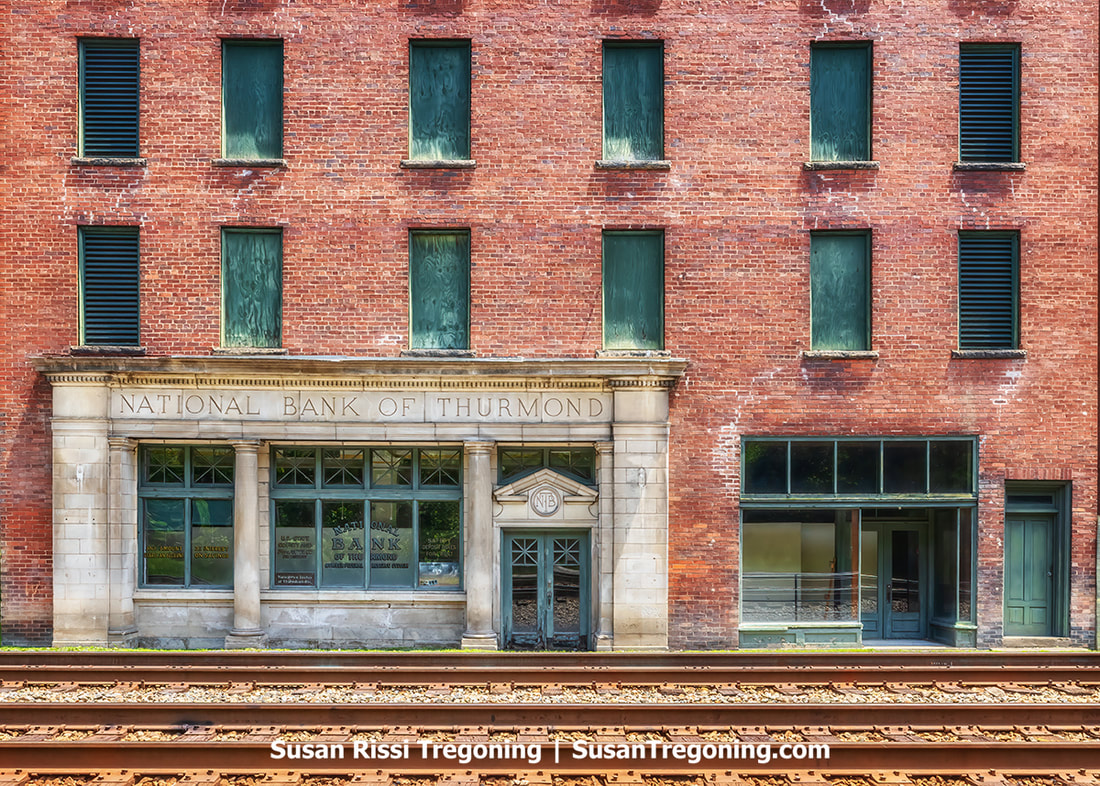 The National Bank of Thurmond stands as one of the few remaining structures in Thurmond. Situated in the heart of downtown, where the railroad tracks cut through leaving very little space for a sidewalk. The National Bank of Thurmond stands as one of the few remaining structures in Thurmond. Situated in the heart of downtown, where the railroad tracks cut through leaving very little space for a sidewalk.
Still a handsome building, back then, the National Bank of Thurmond was considered the most beautiful building in the area. The pillared facade was added in 1923 after the bank relocated from the Hotel Thurmond. Originally constructed in 1917 by the Bullock Realty Company, it initially housed a jewelry store, clothing store, Western Union Telegraph Company, and apartments. More recently, it served as the Banker's Club Hotel and Restaurant, catering to boaters and other visitors.
The coal hopper cars emptied their contents into a pit beneath the structure, and an elevator was used to transport the coal from the pit to the tower. Once in the building, the coal was funneled through chutes into the coal tenders of the locomotives positioned on the adjacent tracks. The hoppers could drop 500 tons of coal simultaneously via the chutes. Although the C&O held onto its steam locomotives longer than any prominent railroad operator, CSX abandoned the coaling tower in 1960.
Up the steep and narrow drive on the side of the mountain above the Thurmond Railroad Depot is the Thurmond Union Church. Circa 1927, this church was built to replace an earlier church structure, and the building rests upon the foundation of its predecessor. Boasting an entrance distinguished by a bell tower, it is not visible from the road view. The first floor housed Sunday School rooms, while the sanctuary is on the second floor. Over the years, the church building has supported Baptist, Methodist, and Presbyterian congregations. The original church owed its existence to the generous support provided by the McKell family.
The Homes in Thurmond
At the time of my visit, I knew that W.D. Thurmond originally owned and built many of the houses as rentals. Those are located past Commercial Row. But, I did not realize that McKell was responsible for constructing the houses on the mountainside near the depot and the Baptist Church. I mistakenly thought McKell's property was all on the opposite side of the river, and I am still unclear where the two property lines met. I haven't returned to Thurmond since discovering this to get my answers, but if it interests you, be sure to ask the Park Rangers when you visit. I'd love to hear the answer, so please leave me a note at the end of this post!
Some of these houses, called Jenny Linds, were thought to describe their construction rather than style. These houses were constructed from rough-sawn lumber. They had board and batten exterior walls, rough floors, and partitions inside instead of walls. They were often built on stilts without insulation and served as basic housing for workers in the coal fields. One possible explanation for their name is that the wind would whistle through them like a bird, earning them the Swedish nightingale nickname. Most of these homes have disappeared, but the ones that remain, the open spaces beneath the houses, have been closed off and used for storage or additional rooms. Many owners have also added asphalt shingles over the rough siding. Other places were more durable, especially those with weatherboard siding and ornate features, which stood out for their durability, specifically the two-story ones initially built to accommodate railroad supervisory personnel.
Thurmond in the Movies
Matewan, a film released in 1987, depicts the Matewan Massacre during the West Virginia Coal Wars in the 1920s. This violent incident unfolded within the Pocahontas Coalfield Mining District in Matewan, West Virginia. It pitted local coal miners against the Baldwin-Felts Detective Agency and led to the deaths of two miners, seven agents, and the mayor. The movie delved into class struggle and pacifism themes and was filmed in a classic Western style.
Much of the movie was filmed in Thurmond and gives a good feel for the town's appearance during the 1920s. The movie is still available for purchase on DVD and Blue Ray from Amazon, but other than a poor-quality version on YouTube, I have not found anywhere else to stream it. Know Before You Go
Although considered a ghost town, Thurmond continues to be a busy railroad junction, with an average of 10-24 trains traversing its tracks daily. There isn't a lot of space between the buildings and the tracks, so be sure to exercise caution and watch for trains.
For more information about the New River Gorge, visit GoGorge for a digital copy of the New River Gorge Visitors Guide. Also, check out my blog post about Bridge Day, a one-day extreme sports event that take place at the New River Gorge Bridge every Autumn. Getting to Thurmond
Not every image makes it into my blog. If you enjoyed the images in this article, please check out my West Virginia Collection for more images of the rest of the state, or visit my Gallery with over 3000 images of locations from around the United States.
About the Photographer
0 Comments
Your comment will be posted after it is approved.
Leave a Reply. |
AuthorI am the 8th photographer in 4 generations of my family. Back in 2006, my husband accepted a job traveling, and I jumped at the chance to go with him. Categories
All
Archives
June 2024
This website uses marketing and tracking technologies. Opting out of this will opt you out of all cookies, except for those needed to run the website. Note that some products may not work as well without tracking cookies. Opt Out of Cookies |
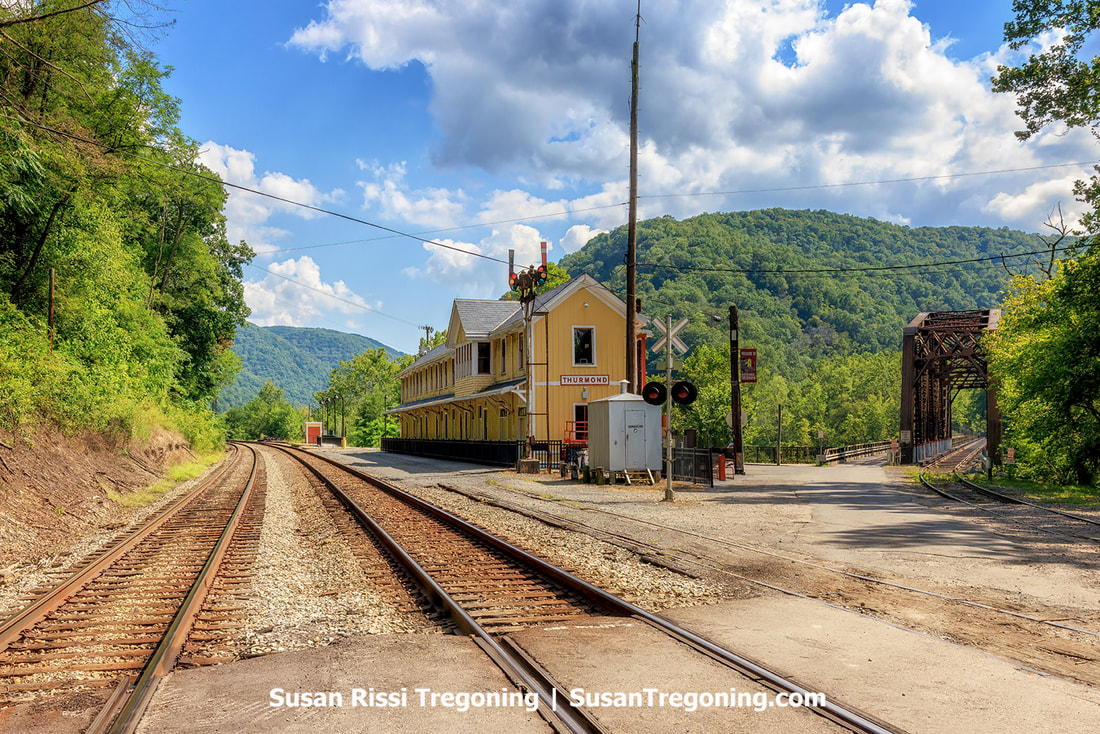


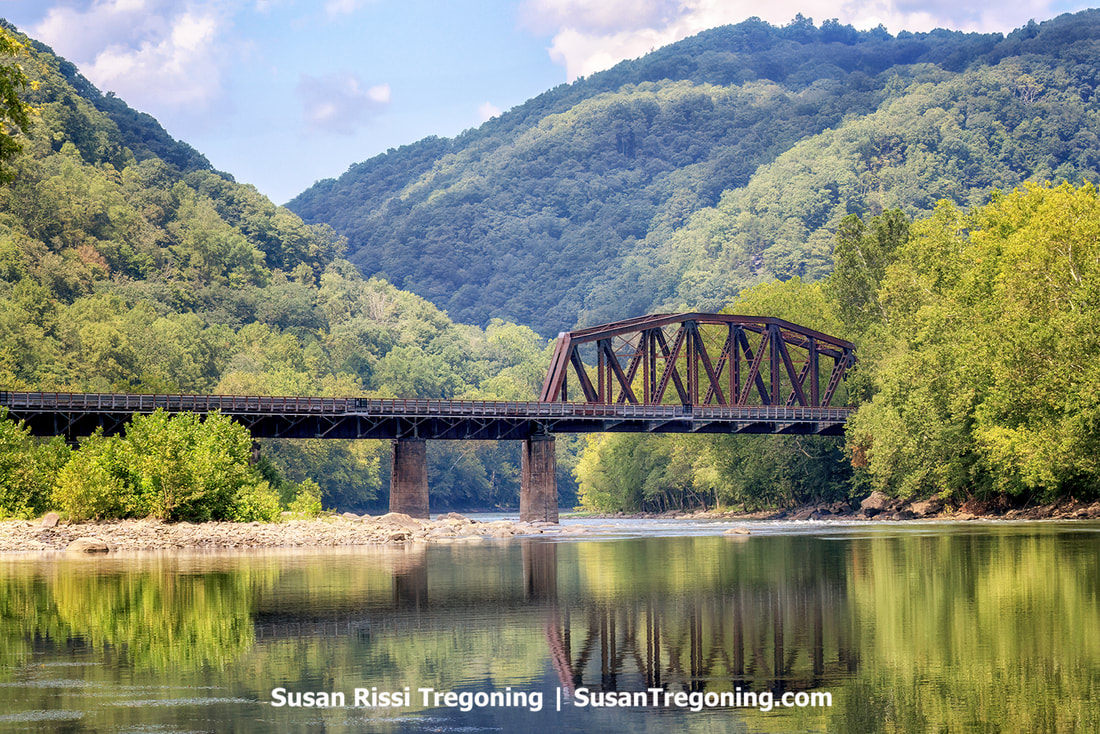

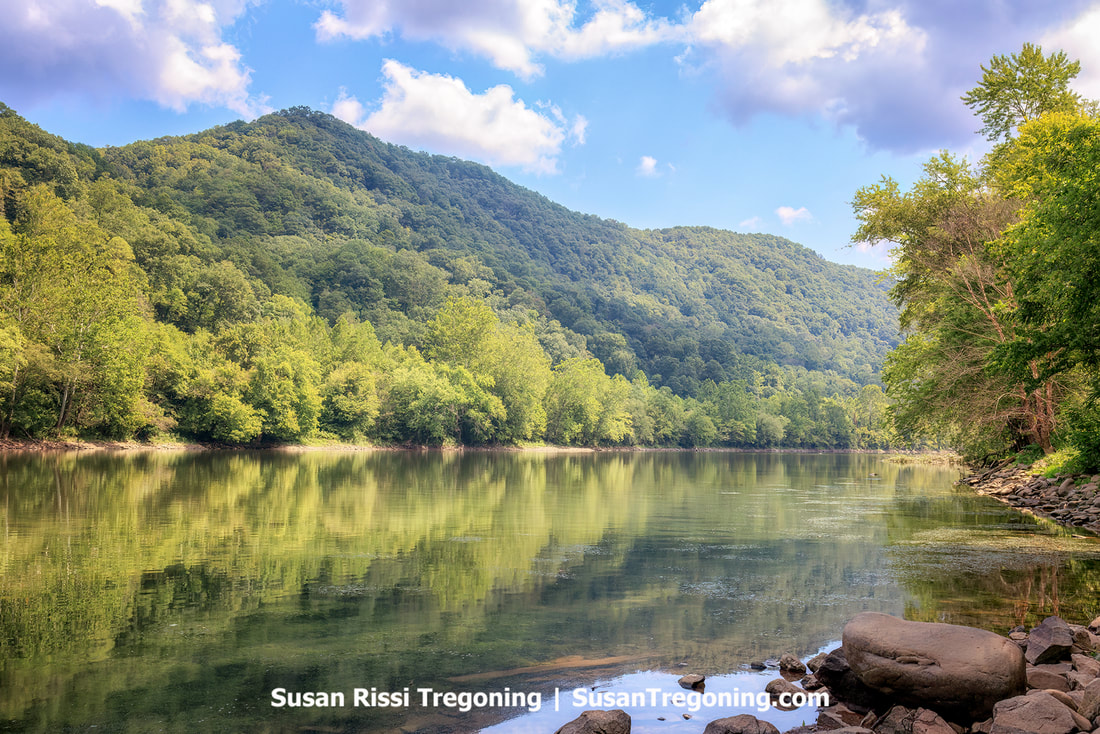



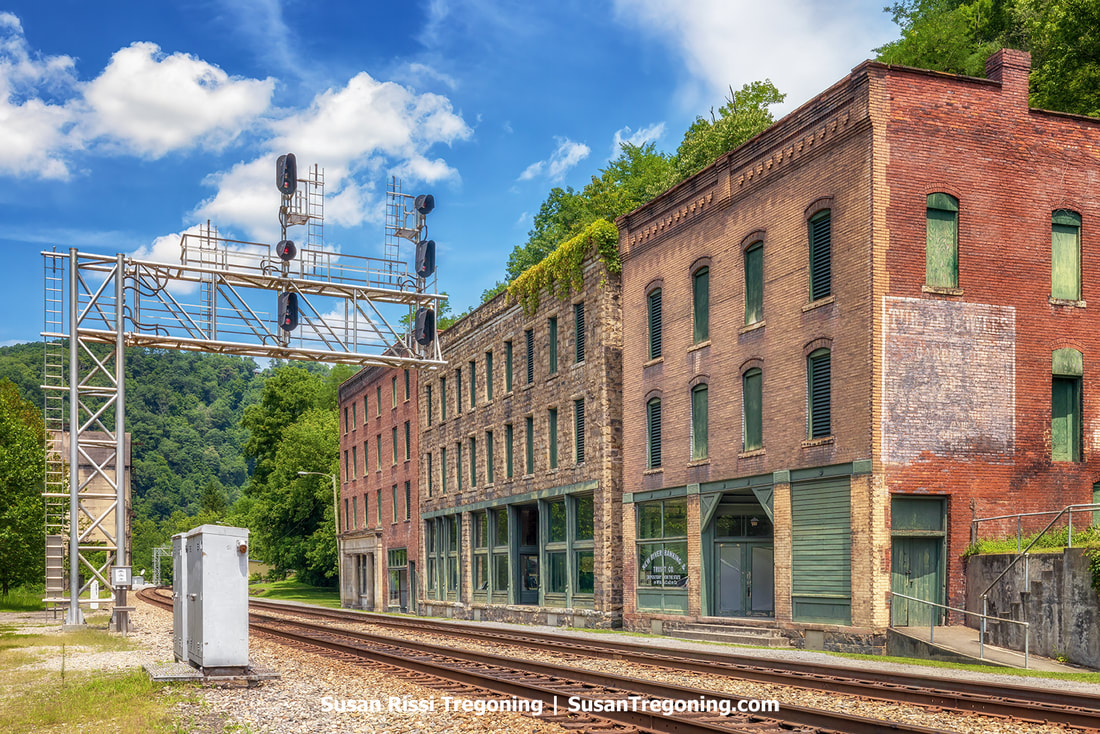

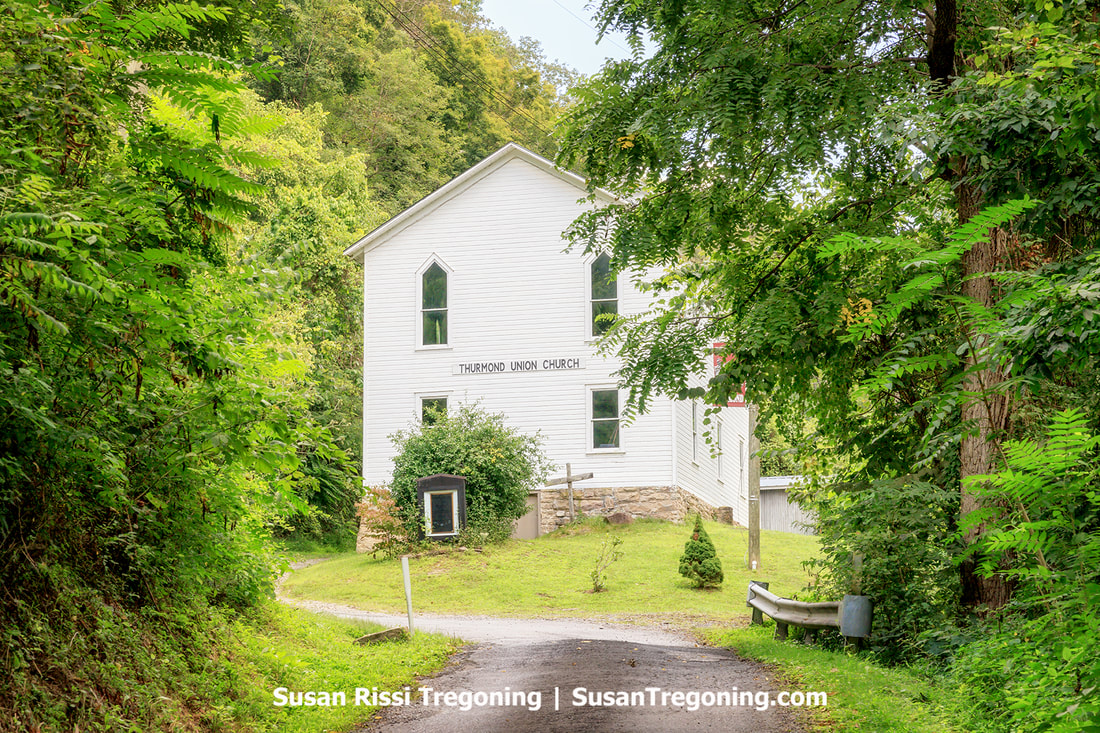
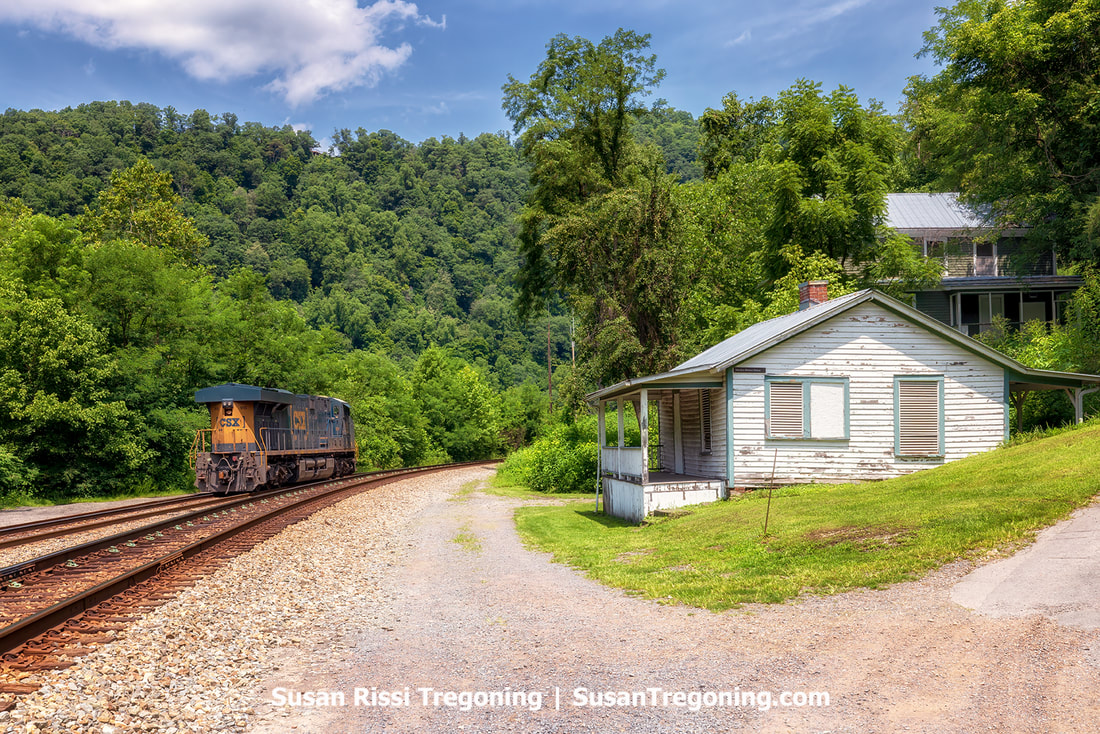
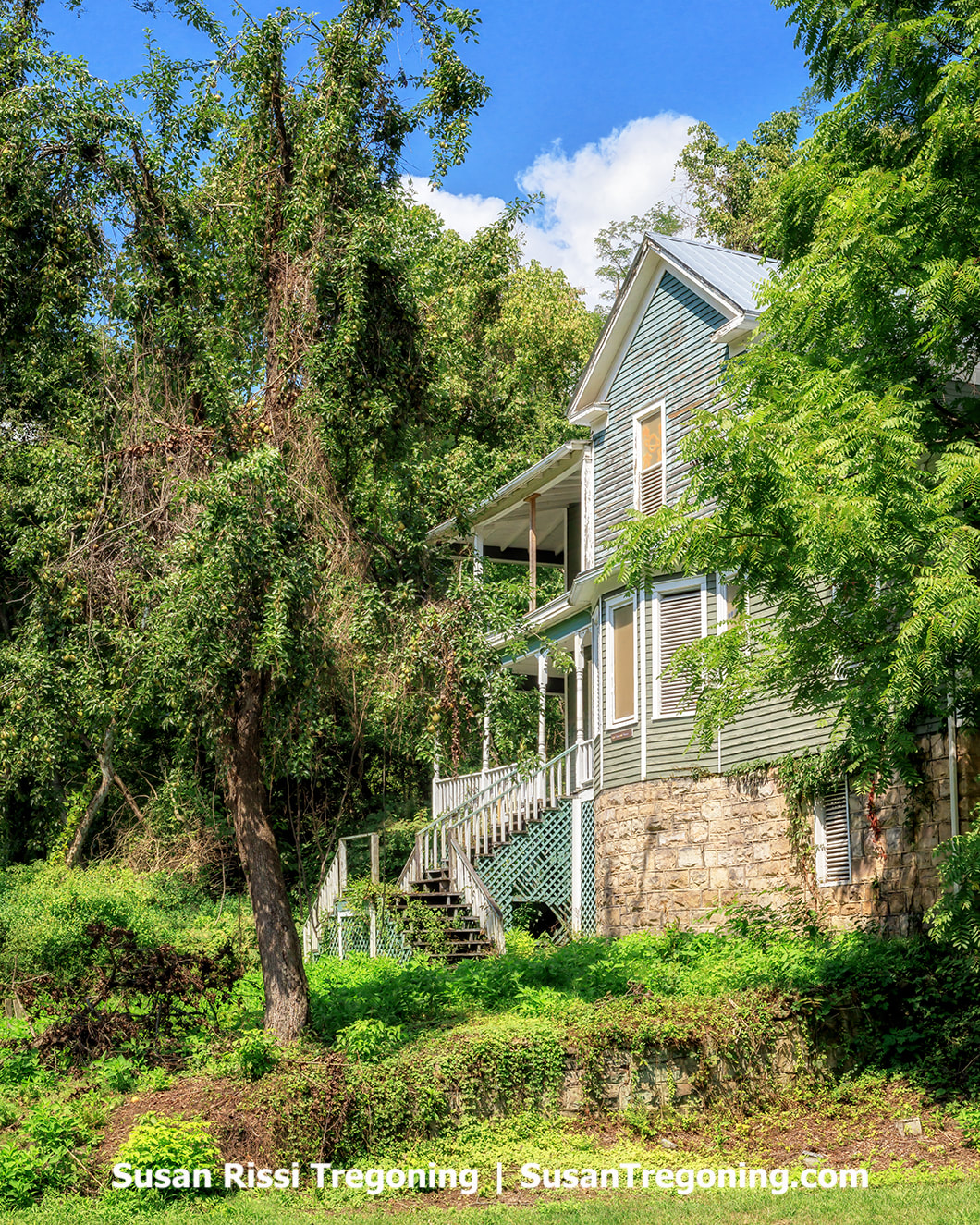
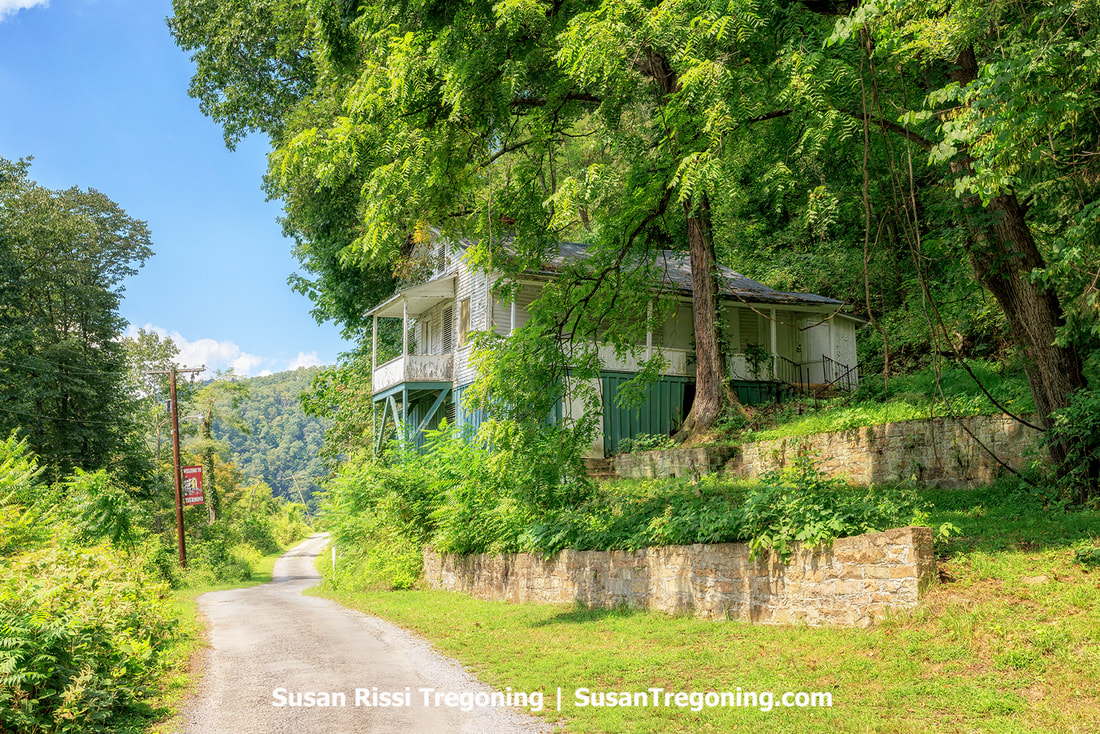
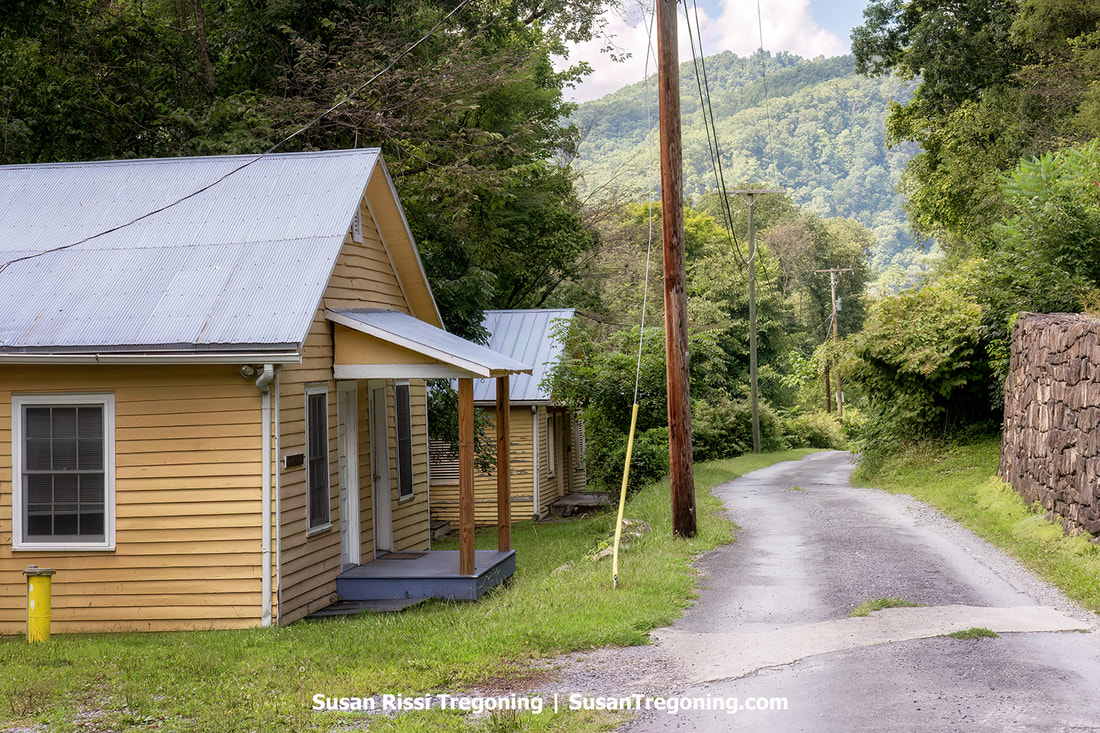




 RSS Feed
RSS Feed